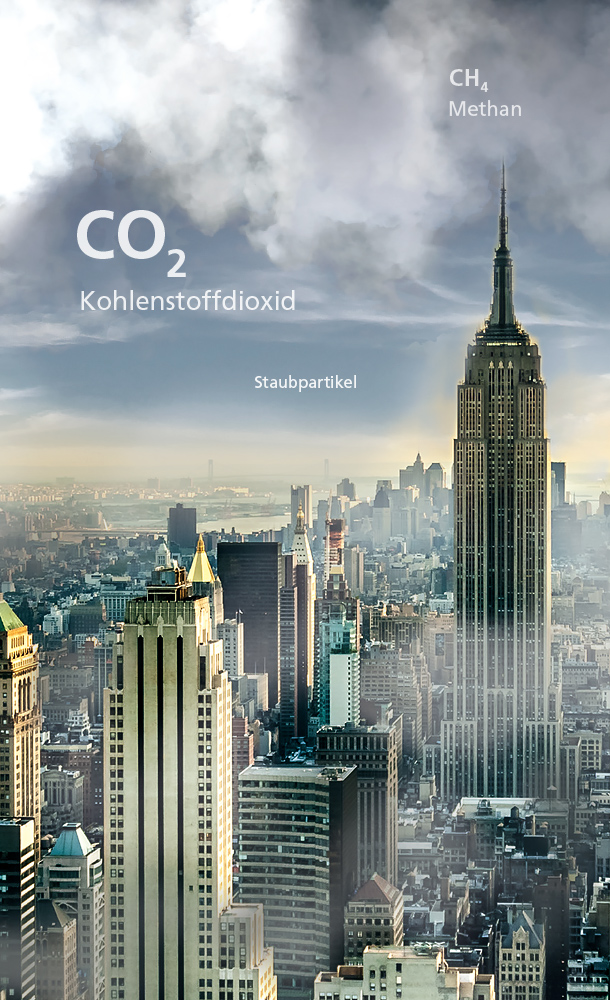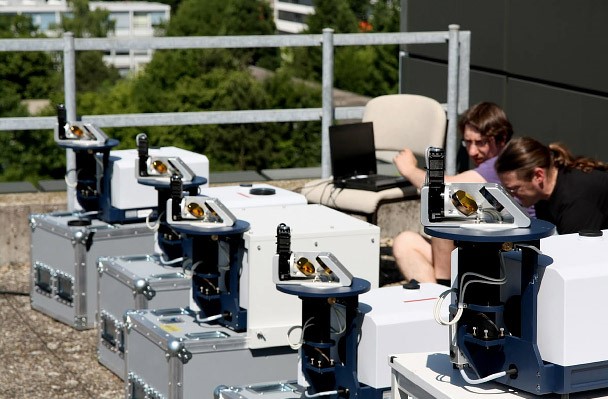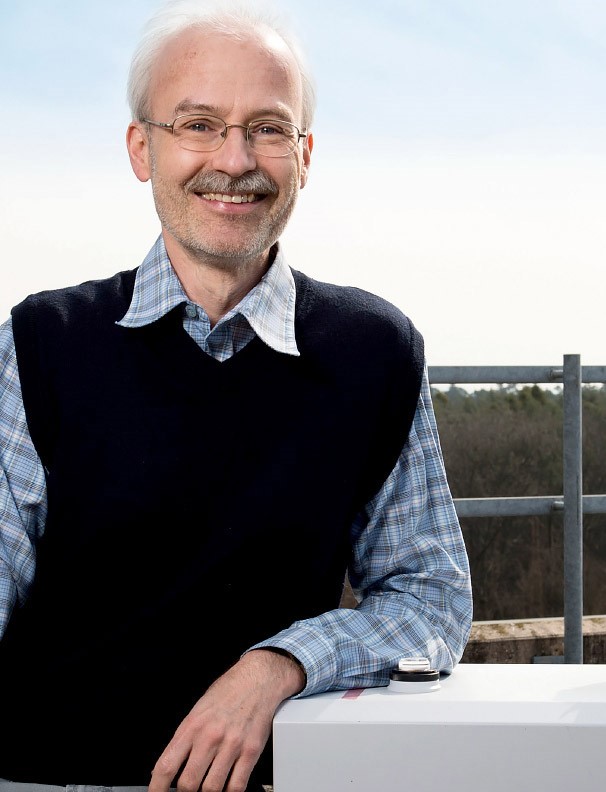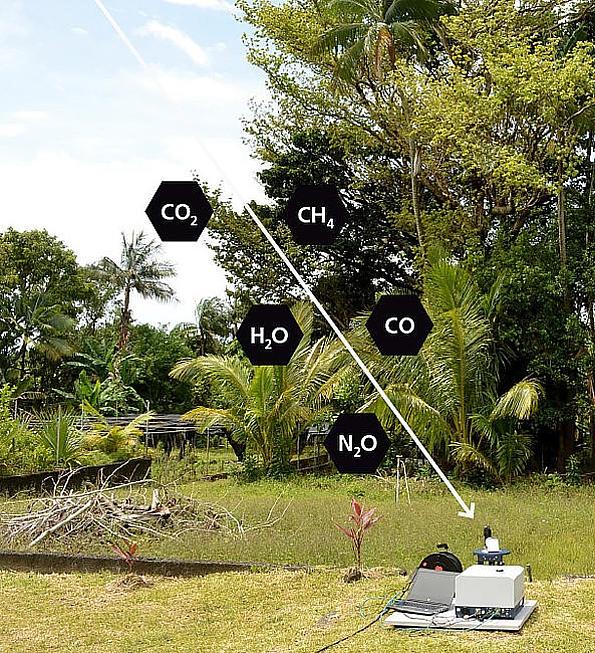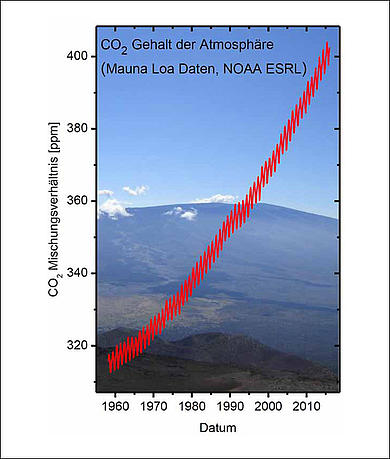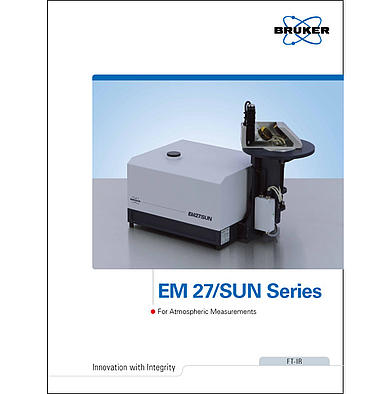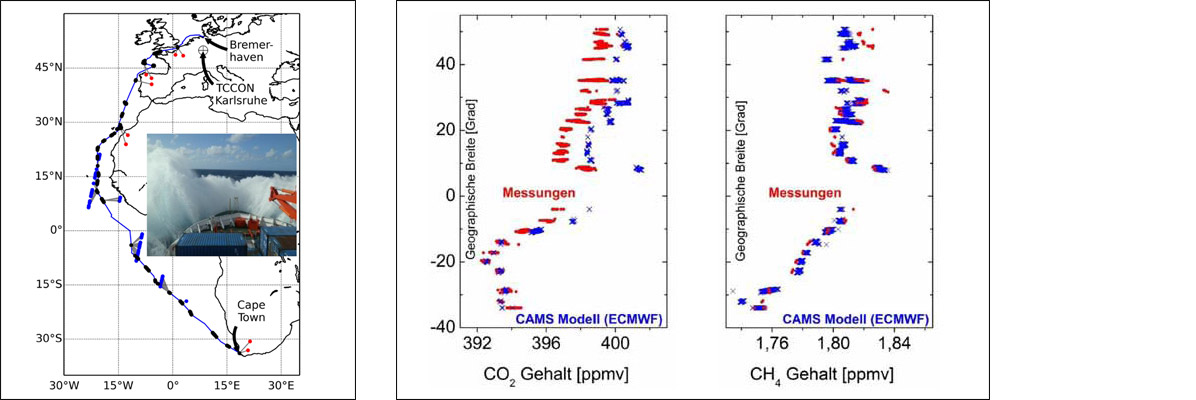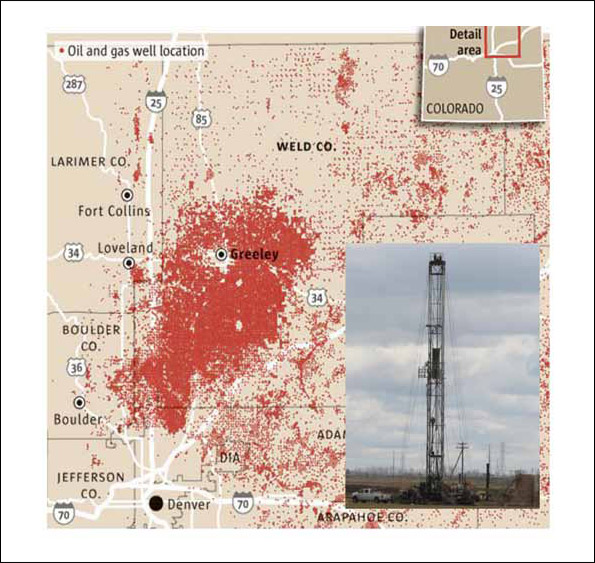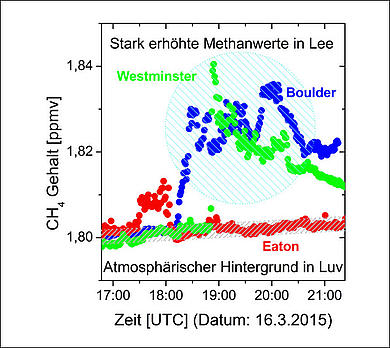Bruker Optik GmbH in Ettlingen develops and sells a wide range of Fourier spectrometers for different applications, including instruments for the detection of atmospheric trace gases. KIT scientists in collaboration with Bruker have now developed a new portable Fourier spectrometer for the high-precision measurement of greenhouse gases.

The view from Mauna Loa does not necessarily remind you of the classic pictures of polluted air. The active volcano on Hawaii is picturesque and almost deserted. Nevertheless, the name Mauna Loa often comes up when it comes to climate change and carbon dioxide. At the foot of the volcano is a meteorological station that has been measuring human influence on the composition of the atmosphere since 1958. The curve recorded in this way shows an increasing carbon dioxide content and forms a good basis for documenting long-term developments. Accurate and representative measurements of carbon dioxide content in as many places as possible are needed to evaluate concrete climate protection measures and ultimately to make the right political and economic decisions. Scientists of KIT in the team led by Frank Hase, Ph.D., work at the Institute of Meteorology and Climate Research, Atmospheric Trace Gases, and Remote Sensing, headed by Prof. Johannes Ophal.
The climate researchers of KIT have developed a mobile measuring instrument that allows them to identify sources and sinks of greenhouse gases locally. “Our device measures gas quantities in the atmosphere with unprecedented accuracy. To determine the amount of gas averaged over all layers of the atmosphere, the devices use the characteristic attenuation of solar heat radiation caused by the gases. The new spectrometers are smaller, more robust, more mobile and easier to operate than the stationary laboratory spectrometers that are typically used for such measurements in meteorology”, explains project manager Frank Hase. The new spectrometer can detect changes in the atmospheric content of carbon dioxide and methane of less than 0.1 percent. By placing several of these portable Fourier spectrometers around a certain region, such as a city, an industrial facility or a landfill, the strength of the source can be derived from comparing the measured gas quantities on the windward and windward side.
“Our devices are not only sold and used throughout the world. In doing so, we are also building a global network for the benefit of climate research.”
At an early stage, Bruker showed interest in the climate researchers’ plans to develop a customized compact spectrometer for greenhouse gas measurements. The company is market leader in the field of large spectral high-resolution spectrometers used for laboratory applications and atmospheric research. At the beginning of the collaboration in 2011, Bruker sold a handy and solid spectrometer for analysis use in fires, the EM27. “The aim of our cooperation with KIT was to develop a new instrument for greenhouse gas measurements based on the EM27 spectrometer. For this purpose, the optical structure of the device was modified based on the preliminary investigations of KIT and the device was combined with a compact solar tracker. With this new development, the EM27/SUN, results can be obtained with an accuracy comparable to traditional spectral high-resolution measurements with significantly more complex and non-portable devices, since the signals, i.e. the measured spectra, contain very little noise”, says Prof. Roland Harig from Bruker Optics.
Meanwhile, climate researchers around the world are using the Fourier spectrometer. Today, the team at KIT operates ten mobile instruments – made possible by funding from the Helmholtz research infrastructure ACROSS. In addition, the team has already successfully measured greenhouse gas emissions of Berlin, Paris and Tokyo: Using several spectrometers scattered around the city, they were able to measure both the elevated values in the cities’ exhaust trap and the background concentration, i.e. the amount of greenhouse gases present in the atmosphere today. From the differences, the researchers determined the actual emission levels of carbon dioxide and methane. Their data can help countries and cities test assumptions about their emissions with direct measurements. The measurement campaigns around Paris and Tokyo were carried out in international cooperation: In Paris, with the Laboratoire des Sciences du Climat et de l’Environment (LSCE), the Université Pierre et Marie Curie and the Université Paris-Est Créteil, in Tokyo, in collaboration with the Japanese Space Agency JAXA and the National Institute for Environmental Studies (NIES).
With their method, the researchers have also ventured into a special policy: In Colorado, in cooperation with the University of Colorado at Boulder and the National Center for Atmospheric Research (NCAR), they were able to detect very high methane emissions in an area of high fracking activity northwest of Denver. This is a powerful argument against the controversial method of producing gas and oil.
Their global activities and efforts to protect climate change have not only developed in research circles: In 2016, Frank Hase presented his process at the “Environment Week” organised by the Federal President and the German Environmental Foundation at Schloss Bellevue in Berlin. The continued cooperation of KIT with its industrial partner Bruker, however, ensures that the technological innovation does not remain at the level at which it was initially achieved: In the meantime, KIT researchers have expanded the instrument with a further spectral channel, which additionally allows the measurement of carbon monoxide. One aspect that is important to the researcher: “Every device sold provides new and better insights into the carbon cycle and anthropogenic greenhouse gas emissions and promotes international scientific cooperation in this field of research. We can see how the carbon dioxide content in the atmosphere is increasing faster and faster: Unfortunately, humankind is still far from the ideal of rational sustainable management.”
